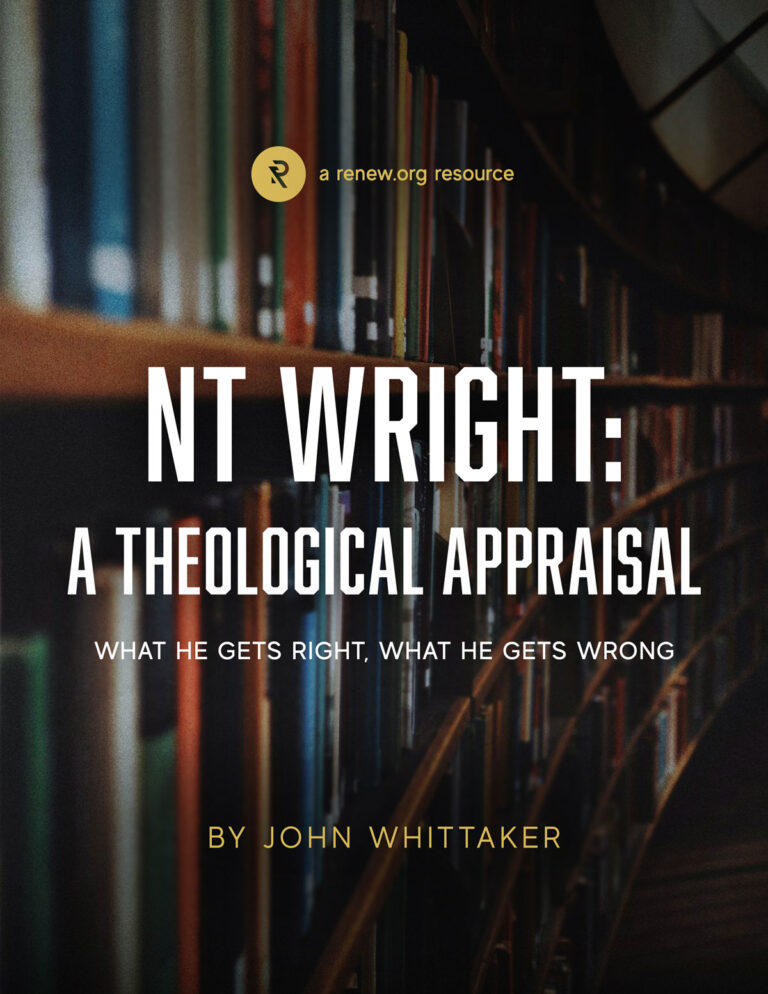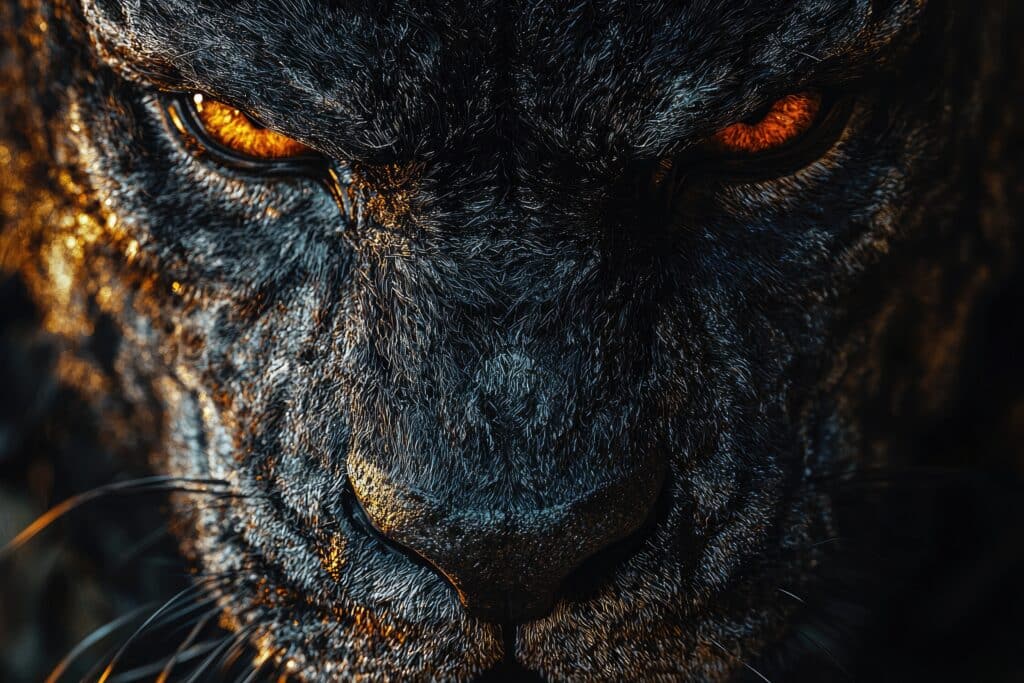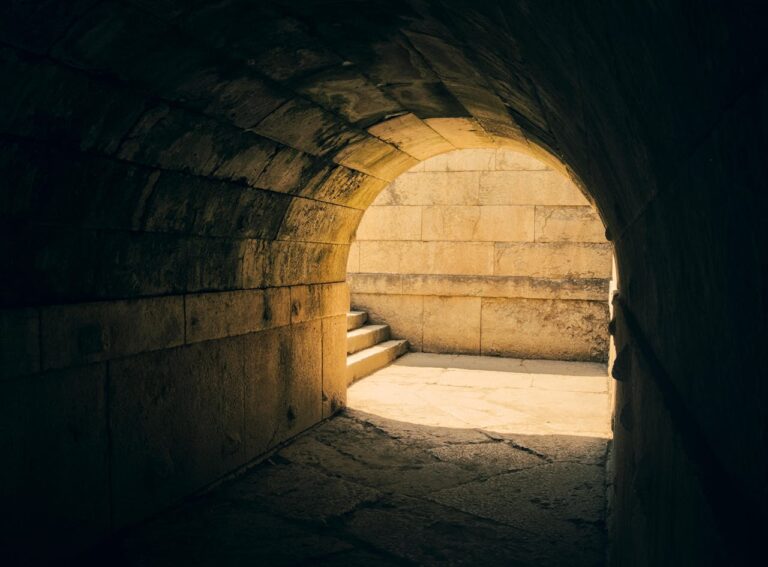Editor’s Note: There seem to be as many interpretations of the book of Revelation as there are readers. It’s true that we find core Christian truths in Revelation— truths which all Christians can agree on—but many questions fall more naturally into the agree-to-disagree, personal conviction category. The question of the Beast’s identity (e.g., Revelation 13) is one which faithful Christians will disagree on, and this article is not meant to provide “the” definitive answer to the question. Nonetheless, I commend this article as 1) being plausibly argued, and 2) providing a very helpful snapshot of how to read Revelation. Its author is Jonathan Young, author of the commentary on Revelation, The Song of the Lamb: The Beautiful and Powerful Art and Message of Revelation. Thoughtful readers will benefit from his inductive style.
The book of Revelation is a message, a sermon, which a reader would get up and read to a gathered church. Someone would read it out loud start to finish, straight through, no time to stop and analyze details. And yet it was meant to be clearly understood by John’s original audience. It was publicly sent out and filled with many commands to all the churches to obey the words of the prophecy.
How is it that such a complicated book was meant to be understandable to a first-century church gathering?
Through repeating themes throughout the book, Revelation invites us to focus on the broad message rather than on every detail. For example, Revelation sets up many of the issues provoking the letter’s writing in chapters 2-3 where Jesus directly addresses each of the seven churches with a crystal-clear message. And then every aspect and image in Revelation 2 and 3 will reappear throughout the rest of the book, fleshing out the same themes using details that resonated with their present situation. And the book is entirely, from start to finish, revolving around Hebrew scriptures, our Old Testament, known extremely well and even memorized by this audience.
So let me give an example of how, if you focus on the message as a whole, it makes a lot more sense. Moreover, if you know about the historical and Old Testament background, you can really have even more confidence in its meaning. Let’s go through what we learn about “The Beast” in every appearance of it in Revelation, focusing on the broad message rather than every detail. By the end, you should have a good idea of the identity of the Beast in Revelation.
“Let’s go through what we learn about ‘The Beast’ in every appearance of it in Revelation, focusing on the broad message rather than every detail.”
These are the three major passages on the Beast of Revelation. Here’s the Beast, starting with when it first appears in Revelation:
Revelation 11
“And I will appoint my two witnesses, and they will prophesy for 1,260 days, clothed in sackcloth. . . . And when they have finished their testimony, the beast that comes up from the Abyss will attack them, and conquer and kill them. Their bodies will lie in the public square of the great city, which is spiritually called Sodom and Egypt, where also their Lord was crucified.” (Revelation 11:3, 7-8, NIV)
“But after the three and a half days the breath of life from God entered them, and they stood on their feet, and terror struck those who saw them. Then they heard a loud voice from heaven saying to them, ‘Come up here.’ And they went up to heaven in a cloud, while their enemies looked on. At that very hour there was a severe earthquake and a tenth of the city collapsed. Seven thousand people were killed in the earthquake, and the survivors had incredible fear and awe, and gave glory to the God of heaven.” (Revelation 11:11-13, NIV)
What do we learn about the Beast from these verses?
From the first paragraph, we learn that the Beast kills God’s witnesses. The Beast is allowed to only by God, once God says the witnesses’ time of testimony is complete. The Beast is related to the same spiritual force of Sodom and Egypt and which also crucified Jesus.
From the second paragraph, we learn that, despite the fact that the Beast wanted to kill God’s witnesses, it had the opposite intended effect, in that God used their martyrdom to bring many who belong to that city to Him.
Who is the Beast in Revelation? “Despite the fact that the Beast wanted to kill God’s witnesses, it had the opposite intended effect, in that God used their martyrdom to bring many who belong to that city to Him.”
Revelation 12-13
“The great dragon was hurled down—that ancient serpent called the devil, and Satan, who leads the whole world astray. . . . ‘But woe to the earth and the sea, because the devil has gone down to you! He is filled with fury, because he knows that his time is short! . . . ’ Then the dragon was enraged at the woman and went off to wage war against the rest of her offspring—those who keep God’s commands and hold fast their testimony about Jesus. And the dragon stood on the shore of the sea. And I saw a beast coming out of the sea… The dragon gave the beast his power and his throne and great authority. . . . People worshiped the dragon because he had given authority to the beast, and they also worshiped the beast and asked, ‘Who is like the beast? Who can wage war against it?’” (Revelation 12:9a, 12:12b, 12:17-13:1a, 13:2b, 13:4, NIV)
What do we learn about the Beast from these passages?
The Beast is being used as a puppet by Satan because Satan is angry at the Church because he knows his time is short. The people of the world believe the Beast is the most powerful entity and nobody can wage war with it. The Beast persecutes the Church.
Who is the Beast in Revelation? “The people of the world believe the Beast is the most powerful entity and nobody can wage war with it.”
Revelation 17
“Then the angel carried me away in the Spirit into a wilderness. There I saw a woman sitting on a scarlet beast that was covered with blasphemous names and had seven heads and ten horns. The woman was dressed in purple and scarlet, and was glittering with gold, precious stones and pearls. She held a golden cup in her hand, filled with abominable things and the filth of her adulteries. The name written on her forehead was a mystery: Babylon the great the mother of prostitutes and of the abominations of the earth. I saw that the woman was drunk with the blood of God’s holy people, the blood of those who bore testimony to Jesus. When I saw her, I was greatly astonished. Then the angel said to me: ‘Why are you astonished? I will explain to you the mystery of the woman and of the beast she rides.’” (Revelation 17:3-7a, NIV)
“This calls for a mind with wisdom. The seven heads are seven hills on which the woman sits. They are also seven kings. . . . The ten horns you saw are ten kings who have not yet received a kingdom, but who for one hour will receive authority as kings along with the beast. They have one purpose and will give their power and authority to the beast.” (Revelation 17:9-10a; 17:12-13, NIV)
Who is the Beast in Revelation? “This calls for a mind with wisdom. The seven heads are seven hills on which the woman sits.”
“Then the angel said to me, ‘The waters you saw, where the prostitute sits, are peoples, multitudes, nations and languages. The beast and the ten horns you saw will hate the prostitute. They will bring her to ruin and leave her naked; they will eat her flesh and burn her with fire. For God has put it into their hearts to accomplish his purpose by agreeing to hand over to the beast their royal authority, until God’s words are fulfilled. The woman you saw is the great city that rules over the kings of the earth.’” (Revelation 17:15-18, NIV)
What do we learn about the Beast from these passages?
The Beast is ruled by a city. The Beast is ruled by a series of kings. It is made up of the subjects of the city, smaller kings who join the Beast in persecuting the Church. The governors/peoples/regions ruled by the city will turn on the city and attack. God will punish the Beast for persecuting the Church.
Now to assemble what we learn . . .
To review, here’s what we’ve learned so far:
Despite the fact that the Beast wanted to kill God’s witnesses, it had the opposite intended effect, in that God used their martyrdom to bring many who belong to that city to Him.
The Beast is being used as a puppet by Satan because Satan is angry at the Church, since he knows his time is short. The people of the world believe the Beast is the most powerful entity and nobody can wage war with it. The Beast persecutes the Church.
The Beast is ruled by a city. The Beast is ruled by a series of kings. The Beast is made up of smaller kings/governors who join the city in persecuting the Church. The governors, peoples, regions ruled by the city will turn on the city and attack. God will punish the Beast for persecuting the Church.
Who is the Beast in Revelation? “God will punish the Beast for persecuting the Church.”
Any Clues as to Who the Beast Is?
The message of the Beast is the message of when empires/nations persecute the Church. John is saying that no matter how powerful the Beast seems, God is in control and God is allowing it to happen because it will have the opposite intended effect. In that, just like Jesus’ crucifixion, many will glorify God through martyrdom. John is also saying the real enemy is Satan, and it is a spiritual battle. And John is also saying that God will ultimately put any “Beast” persecuting the Church in its place by showing its true colors and vindicating His witnesses.
Now then, beyond the general message, for John’s audience this was especially-in-your-face as a message very much about them and their situation. There is a very obvious allusion here if you remember your history class growing up.
You may remember when covering Rome that Rome’s nickname was “the city on seven hills.” In Revelation, the Beast is a group of nations/kingdoms making up the empire and subjects of “the Great City,” also called the “Whore of Babylon,” or “Babylon the Great.” And the Great City is said to be “upon seven hills.”
“There is a very obvious allusion here if you remember your history class growing up.”
When I was teaching a class on Revelation, there was an elder of the church who had lived in New York City for much of his life. I asked him, “If I was in New York and said, ‘There’s a monster attacking the Church called “The Five Boroughs,”’ would that be cryptic or mysterious?” He laughed and said no, absolutely not. The “Whore of Babylon” being “the city on seven hills” was in no way cryptic, but would be clear and obvious to all in the Church listening. They even had a holiday in John’s time called “the feast of seven hills.” Again, clearly not a hidden code or hard to understand.
In fact, look at this coin during Vespasian’s reign, the emperor who restored “peace” throughout the Empire following Nero’s death.[1]
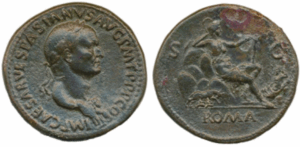
The reverse is a celebration of Roma, the goddess of the city of Rome. This was John’s audience’s dollar bill. They saw it constantly. Except they’d be even more familiar with it than we are of our dollar bills since they didn’t have checks or credit cards. They were very familiar with this image when they heard the words about the Great City, the “Whore of Babylon.”
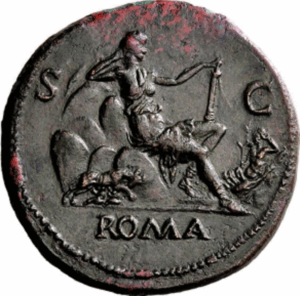
Again, recall these verses from Revelation 17:
“I saw a woman sitting on a scarlet beast that was covered with blasphemous names and had seven heads. . . . The seven heads are seven hills on which the woman sits. . . . She held a golden cup in her hand, filled with abominable things and the filth of her adulteries. The name written on her forehead was a mystery: ‘Babylon the Great, the Mother of Prostitutes and of the Abominations of the Earth!’ I saw that the woman was drunk with the blood of God’s holy people, the blood of those who bore testimony to Jesus.” (Revelation 17:3b; 17:9b; 17:4b-6a, NIV)
This a powerful, even shocking statement, but absolutely it was in no way a cryptic or secretive statement.
“The seven heads are seven hills on which the woman sits.”
Why Is It Called “Babylon”?
As for the name “Babylon,” Rome being given this name can be very easily understood if you know the biblical and historical events of Babylon and Israel’s relationship with Babylon. Babylon was the empire that ravaged the kingdom of Judea and sent the Jews into exile who would form many Jewish communities within the cities across the nations. They did this with the intent that it would destroy their identity and they would assimilate to the ways of nations they were put in. They would be greatly tested as to whether they could maintain their Jewish identity or assimilate to the pagan identities of the nations. Babylon, the city at the heart of this empire, was also where Daniel was sent off to and tested in front of.
But especially relevant in the historical context of Revelation is that the Jews had just lost their war against Rome, Israel/Judea was ravaged by the Roman armies, and worst of all, Jerusalem and the Temple were completely destroyed. I couldn’t possibly do justice to how devastating this would be. John not calling Rome “Rome,” but rather Rome being called Babylon, would have a clear purpose. Not just because it’s a cool, shocking name, but because “Babylon” gives an element of affirmation in their call to faithfulness. For they’ve survived this before.
It’s not John’s style to directly call things their real names, but to use more appropriate names which recontextualize the specific situations. This also encourages application in other similar situations. This is similar to how Jesus’ parable of the prodigal son doesn’t say, “There were two sons, one was a sinner and tax collector, the other was a Pharisee.”
“It’s not John’s style to directly call things their real names, but to use more appropriate names which recontextualize the specific situations.”
So, is there an Old Testament precedent to the Beast? Well absolutely. There is a strong, blatantly obvious allusion.
“In the first year of Belshazzar king of Babylon, Daniel had a dream, and visions passed through his mind as he was lying in bed. He wrote down the substance of his dream. Daniel said: “In my vision at night I looked, and there before me were the four winds of heaven churning up the great sea. Four great beasts, each different from the others, came up out of the sea. . . . After that, in my vision at night I looked, and there before me was a fourth beast—terrifying and frightening and very powerful. It had large iron teeth; it crushed and devoured its victims and trampled underfoot whatever was left. It was different from all the former beasts, and it had ten horns.” (Daniel 7:1-3, 7, NIV)
Familiar? What’s the message of this Daniel passage though? Well, it’s a message of hope. In the vision, the Beast is replaced by the Kingdom of the Son of Man, whose kingdom is of all nations, peoples, and languages, whose kingdom is an everlasting kingdom. Jesus calls Himself, more than any other title in the Gospels, the “Son of Man,” a reference to this major passage.
“. . . the Beast was slain, and its body destroyed and thrown into the blazing fire… In my vision at night I looked, and there before me was one like a son of man, coming with the clouds of heaven. He approached the Ancient of Days and was led into his presence. He was given authority, glory and sovereign power; all nations and peoples and every language worshiped him. His dominion is an everlasting dominion that will not pass away, and his kingdom is one that will never be destroyed.” (Daniel 7:11b; 7:13-14, NIV)
“In the vision, the Beast is replaced by the Kingdom of the Son of Man, whose kingdom is of all nations, peoples, and languages, whose kingdom is an everlasting kingdom.”
And so does this next part of this prophecy in Daniel 7 appear in Revelation as well? Sure enough, as in Daniel 7, the major introduction to the Beast occurs in Revelation 13, followed by the Son of Man’s victory Revelation 14:
“And I looked, and behold! A white cloud! And One like a Son of Man sitting upon the cloud, having a golden crown on His head, and a sharp sickle in His hand. And another angel came out of the Temple crying in a mega voice to the One Who may take His seat on the cloud, ‘Send forth your sickle and reap! Because the hour to harvest has come for You! Because the harvest of the earth has been made fully ripe!’ And the One taking His seat upon the cloud threw down his sickle upon the earth, and the earth was harvested.” (Revelation 14:14-16, NIV)
So, what is the Beast in Daniel?
“He gave me this explanation: ‘The fourth beast is a fourth kingdom that will appear on earth. It will be different from all the other kingdoms and will devour the whole earth, trampling it down and crushing it. But the court will sit, and his power will be taken away and completely destroyed forever. Then the sovereignty, power and greatness of all the kingdoms under heaven will be handed over to the holy people of the Most High. His kingdom will be an everlasting kingdom, and all rulers will worship and obey him.’” (Daniel 7:23-27, NIV)
“Then the sovereignty, power and greatness of all the kingdoms under heaven will be handed over to the holy people of the Most High. His kingdom will be an everlasting kingdom, and all rulers will worship and obey him.”
There you go. The Beast in Daniel’s writings is a kingdom persecuting God’s people—a Beast whose power is taken away by the Son of Man. Exactly what we have in Revelation.
You did it, reader, you figured out the meaning of the beast.
Now, of course there is much more to be said about the Beast along the way in a study of Revelation. But now, we have explored a sample of how to read Revelation in light of its repeated themes, its historical context, and its Old Testament background.
[1] “Copper alloy coin. (whole) Head of Vespasian, laureate, right, with aegis. (obverse) Roma seated right on the seven hills; to left, wolf and twins; to right, River Tiber. (reverse)” According to the British Museum, “This bucolic reverse scene suggests post-war Rome in a state of relaxed peace after the ‘Year of the four emperors,’ AD 69.”
Excerpted from The Song of the Lamb: The Beautiful and Powerful Art and Message of Revelation by Jonathan Young. Used by permission.
